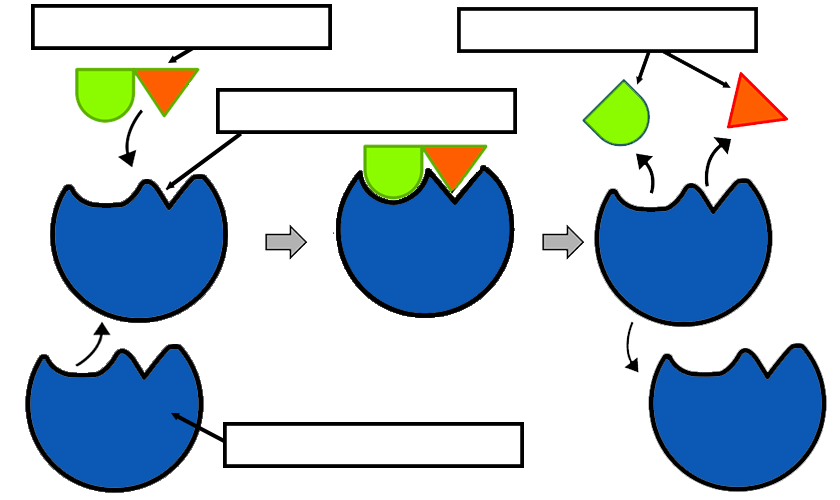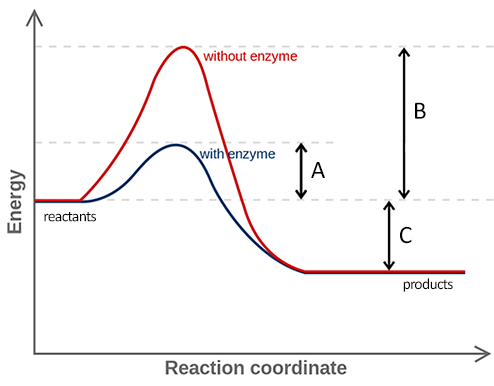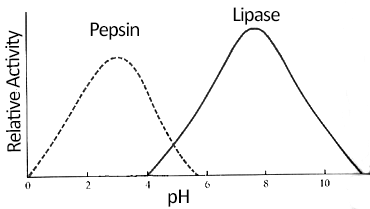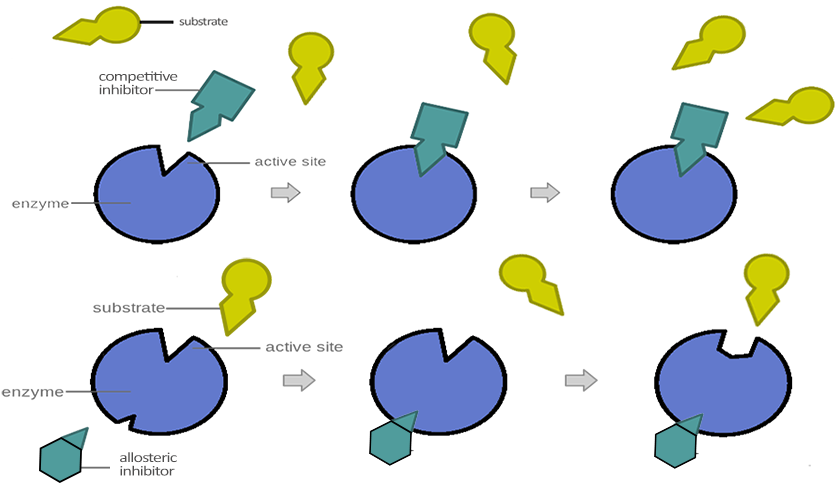Analyzing Graphics: Enzymes
1. Enzymes act on substrates. Label the enzyme, substrate, active site, and products on diagram.

Answer true or false to the following statements based on the graphic:
a. _______ Enzymes interact with many different substrates.
b. _______ Enzymes change shape after a reaction occurs.
c. _______ An enzyme can be reused with a new substrate.
d. _______ The substrate is changed in the reaction.
e. _______ If the shape of the enzyme changed, it would no longer work.
f. _______ When all substrates are used, the reaction stops.
2. Enzymes speed up the reaction by lowering the activation energy needed for the reaction to start. Compare the activation energy with and without the enzyme.

Identify the part of the graph that shows:
a) ___ Overall energy released during reaction
b) ___ Activation energy with enzyme
c) ___ Activation energy without enzyme
3. Enzymes work best at optimal temperature and pH values. For example, the enzyme, pepsin, in your stomach must be able to function in a highly acidic environment to break peptide bonds found in proteins.
Acidic or basic conditions can disrupt the hydrogen bonds between the loops of the protein chains. If this disruption occurs near the active site, the enzyme can become distorted and not fit the substrate perfectly. The rate of reaction is reduced as more enzymes become denatured.

a) What is the optimal pH for pepsin? _______ For lipase? _______
b) Do you think lipase is an enzyme that is found in the stomach? Why or why not?
4. Enzymes can be inhibited. Inhibitors can slow down or stop enzymatic reactions. There are two types of inhibition: competitive and allosteric.

Answer true or false to the following statements based on the graphic:
a) _____ Increasing the number of inhibitors will decrease the overall rate of reaction.
b) _____ Allosteric inhibitors block the active site.
c) _____ Allosteric inhibitors change the shape of the enzyme.
d) _____ Adding a competitive inhibitor will increase the number of products in the reaction.
e) _____ Competitive inhibitors bind to the substrates.
Other Resources on Enzymes
Slides: Metabolism, Energy, and Enzymes | Guided Notes
Enzyme Practice - Label enzyme and substrate, idenfity types of feedback inhibition
Enzyme Lab - use liver to show how catalase breaks down hydrogen peroxide into oxygen and water, bubbling is used to measure the reaction at different temperatures.
Observe Catalase Activity in Yeast - create sodium alginate spheres to observe how catalase breaks down hydrogen peroxide
Enzyme Activity Using Toothpickase - simulate the activity of an enzyme by breaking toothpicks


